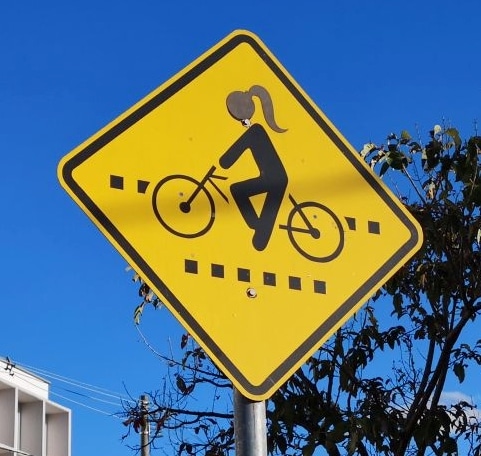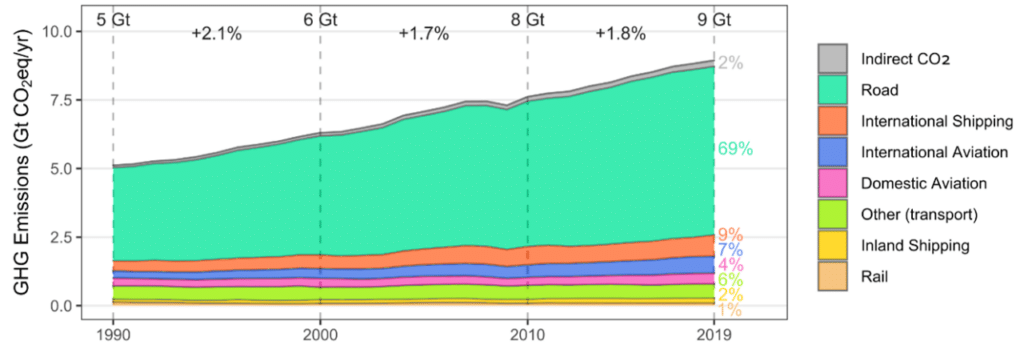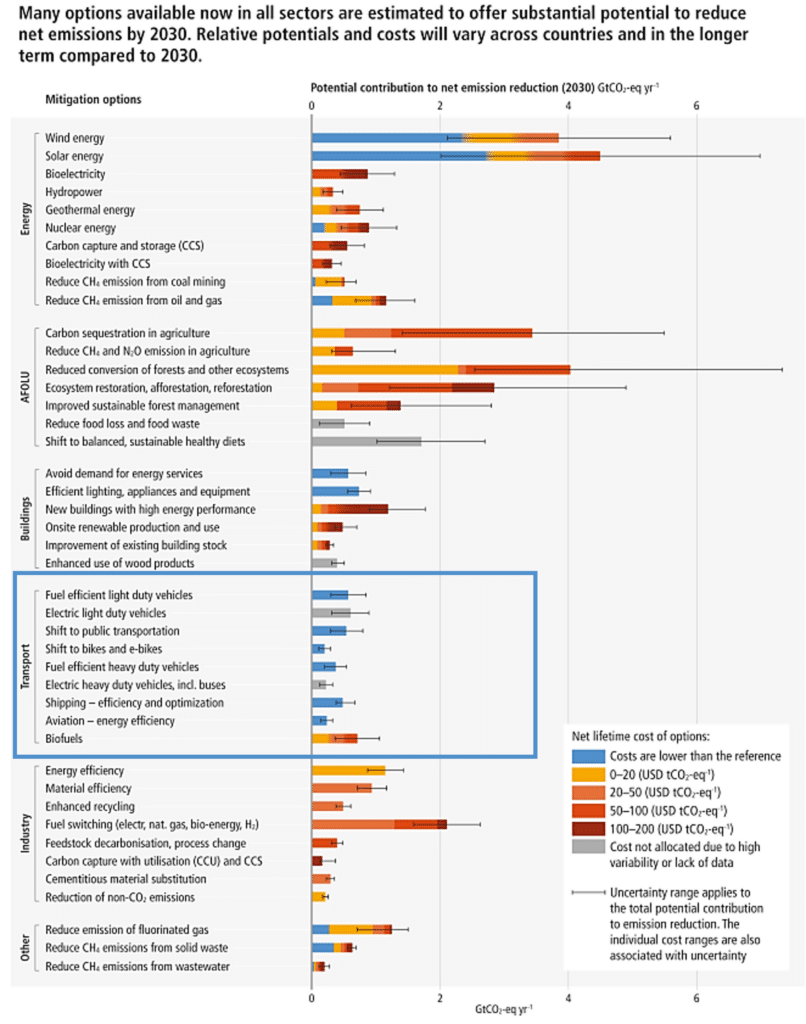
Bad news first: while annual GHG emissions from energy supply and industry are increasing slightly less rapidly than in previous decades, emissions growth remains roughly constant at about 2% per year in the transport sector, according to the latest IPCC assessment report of Working Group III that was published on Monday, 4 April 2022.
Indeed, since 2010 transport emissions have grown faster than in any other end-use sector and transport currently accounts for about 23% of global-energy related CO2 emissions. 70% of those emissions come from road transport.
Emissions from transport are growing more rapidly in developing regions than in North America or Europe, with projections seeing emissions rise especially in Asia and Africa. Currently however, it is still North America and Europe that account for the lion’s share of emissions.

But there is good news also: As Jim Skea, co-chair of Working Group III, summarized, we are not currently on track to limit global warming to 1.5°C, but we do see increasing evidence of global action. In detail, the report makes clear that potentials and know-how are available to act in a future-oriented way. Let’s take a look together at the report’s most important messages.
Changes in demand patterns reduce emissions and increase wellbeing
This IPCC report is the first one to look at the role of demand-sided options for mitigating emissions. It puts particular importance at the avoidance of transport by reducing demand which can be fostered by implementing people-centred urban design and collocating jobs and housing to achieve compact urban form. This step will require a lot of effort but will pay off not only in terms of emissions reductions but also due to various co-benefits, such as a higher quality of life, improved air quality and equitable access to goods and services. In other words, demand-sided options lead to improved wellbeing for all.
“Electric vehicles powered by low emissions electricity offer the largest decarbonisation potential for land-based transport, on a life cycle basis”
The largest share of traffic-related emissions is caused by road vehicles. Hence, the IPCC recommends promoting active mobility and public transport. Very important is also electric mobility, as electrification based on renewable energy has the greatest potential for decarbonisation, as do improvements in battery technologies. Deployment of EVs and implementation of accompanying infrastructure, such as charging stations, is an important strategy, in particular in the short-term. Even long-haul heavy-duty trucks can be decarbonised through battery-electric haulage. In part, they might have to be complemented by hydrogen- and biofuel-based fuels.
Aviation and shipping remain the problem child
Aviation and shipping account for almost a quarter of transport-related CO2 emissions and show a dangerously sharp increase. There will be a considerable need for action, as neither can simply be electrified, but require mitigation technologies that are not yet commercially feasible. Further research and support for sustainable biofuels, low-emission hydrogen, and derivatives, including synthetic fuels, will be necessary.
In summary, the IPCC stresses once again the need for rapid action
While current developments are expected to result in an increase of up to 50%, a maximum climate warming of 1.5°C requires a 60% reduction of transport-related emissions.
Fortunately, according to the report, most zero-carbon alternatives in transport are cost competitive and mature enough for implementation (see all the blue bars for transport in this chart). The latest IPCC report tells us two things: bringing transport on track in time may be a daunting challenge – but we have the tools and knowledge to do it!

written by Matthias Langer and Nadja Taeger
The Advancing Transport Climate Strategies (TraCS) project that authored this blog article is implemented by the Deutsche Gesellschaft für Internationale Zusammenarbeit (GIZ) GmbH and financed by the International Climate Initiative (IKI) of the German Federal Ministry for the Environment, Nature Conservation, Nuclear Safety and Consumer Protection.
